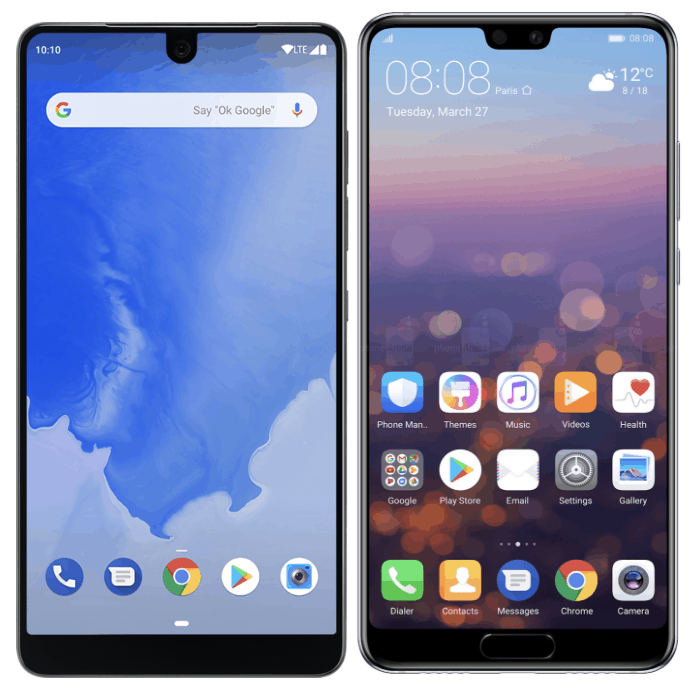
Not that phones with multiple notches are really a thing yet — ZTE’s new concept phone with two notches notwithstanding — but Google has decided to go ahead and let it be known:
If any of you crazy phone makers are thinking about building a phone with three or more notches, probably don’t do that.
A new blog post from Android UI product manager Megan Potoski explains the company is working with device manufacturers on a few requirements “to ensure consistency and app compatibility.” They include limits on notches, or “cutouts,” and specifications on where they can exist on the device.
For example, Android P phones can only have one cutout on each edge of the device. That means no more than two cutouts on a device, and multiple cutouts can’t exist on a single edge. There also can’t be any cutouts on the left or right sides of the device.
“Smartphones are quickly moving towards smaller bezels and larger aspect ratios,” Megan writes in the post. “On these devices, display cutouts are a popular way to achieve an edge-to-edge experience while providing space for important sensors on the front of the device. There are currently 16 cutout devices from 11 OEMs already released, including several Android P beta devices, with more on the way.
“These striking displays present a great opportunity for you to showcase your app. They also mean it’s more important than ever to make sure your app provides a consistently great experience across devices with one or two display cutouts, as well as devices with 18:9 and larger aspect ratios.”
She goes on to encourage to developers to test all screens and versions of their app experience to make sure they don’t get buggy on devices with notches. For that, Android P beta devices with a cutout like the Essential PH-1 are recommended. Or, barring that, something like the Android Emulator can be used to test with a simulated cutout.
Among the other notch-related requirements that are spelled out so that devices with notches don’t negatively affect the way apps run, the status bar has to extend to at least the height of the notch in portrait mode. And in fullscreen or landscape orientation, the entire notch area has to be letterboxed.
Given that three notches on a phone is more far-fetched than reality at this point, the framework in this blog post seems slightly unnecessary, except from the standpoint of Google wanting to spell out limits that just ensure a smooth app experience never mind the device being used. The final version of Android P is supposed to be out soon, of course, so points to Google for at least looking down the road and trying to get a little ahead of the game.
























